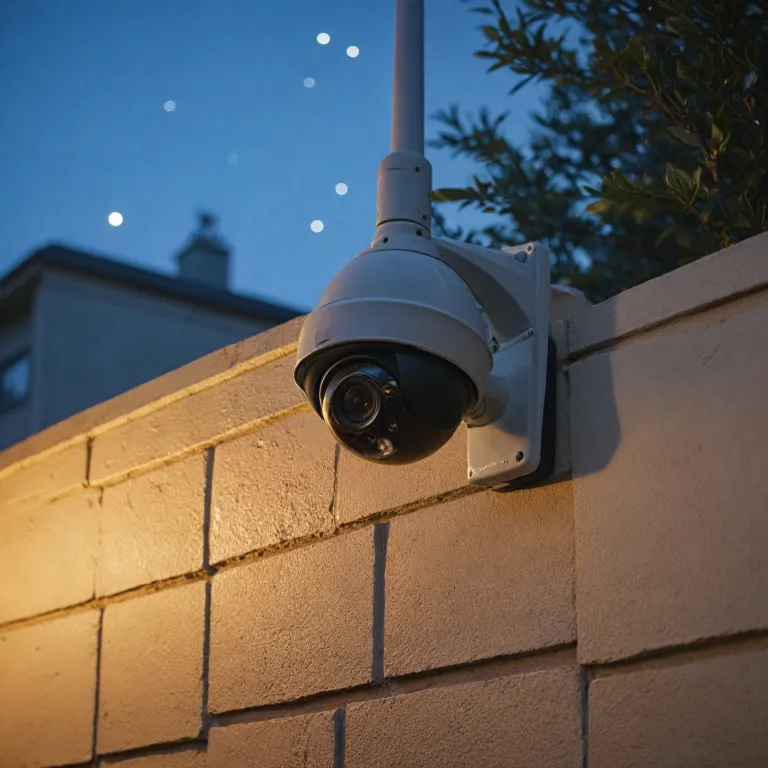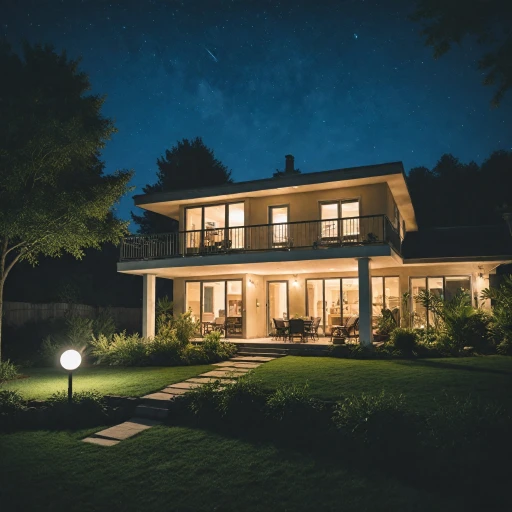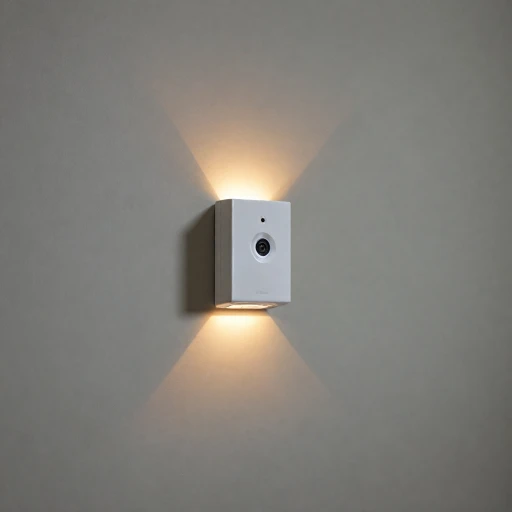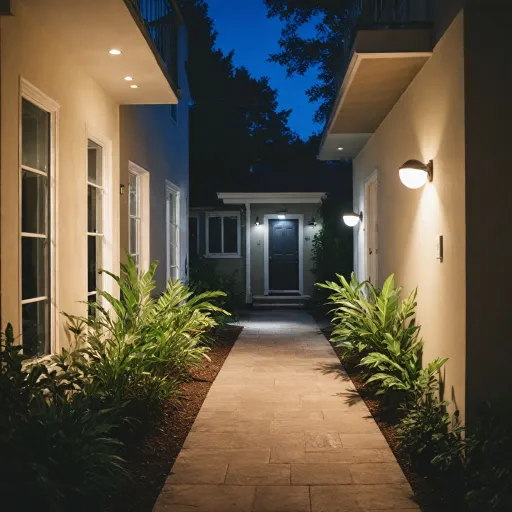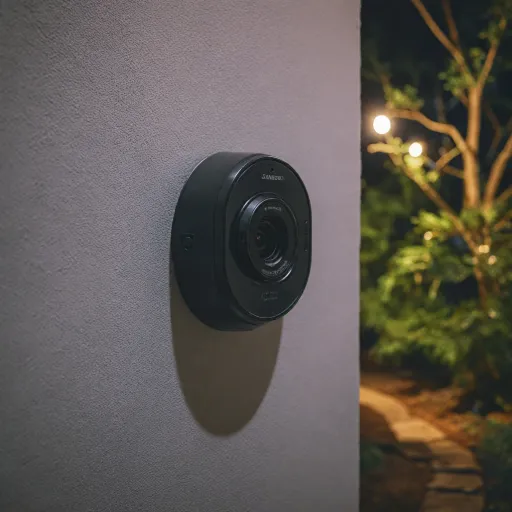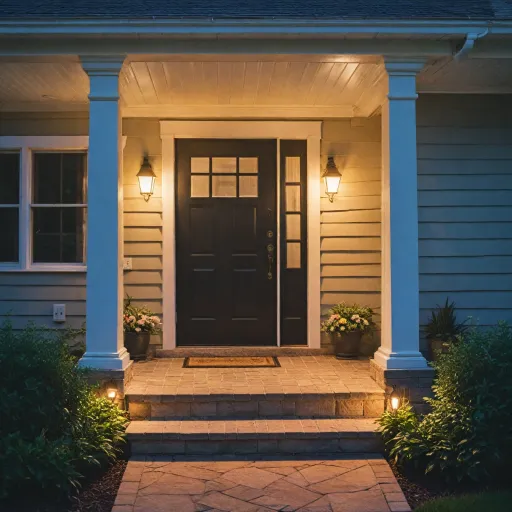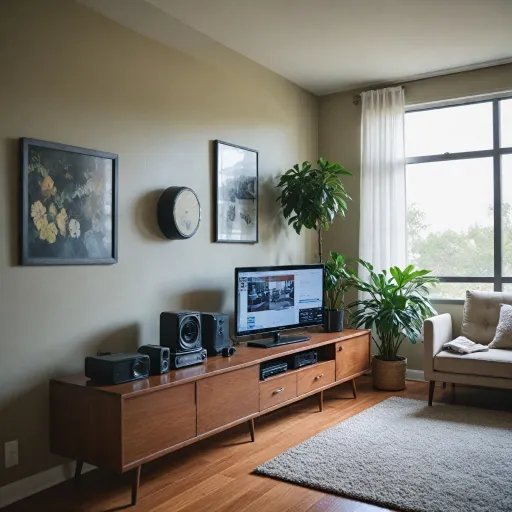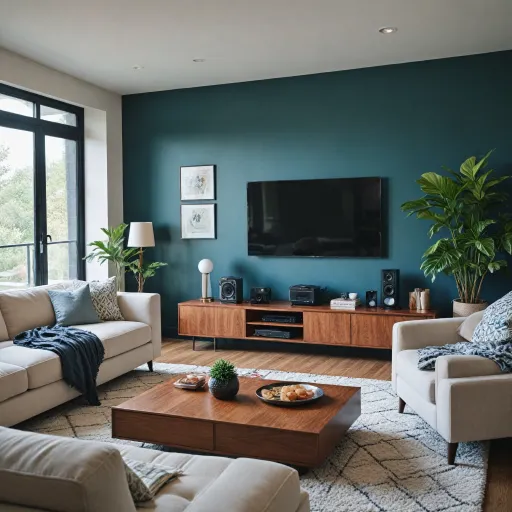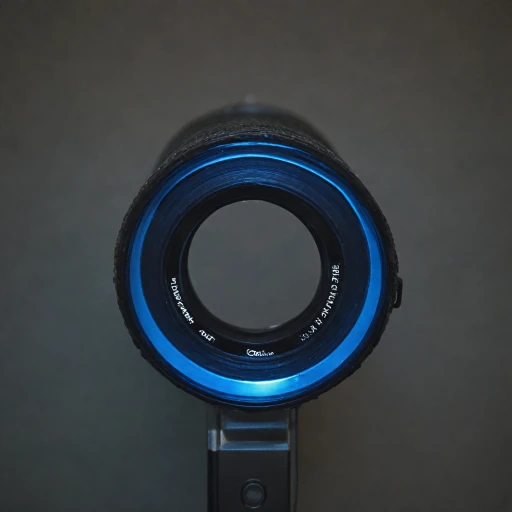
Understanding what a turret camera is
What Makes a Turret Camera Unique?
When looking at security camera options for your home, you might come across terms like turret camera, dome camera, and bullet camera. A turret camera stands out for its ball-and-socket design, which allows the camera to be easily adjusted to cover a wide angle. Unlike dome cameras, turret cameras do not have a glass dome covering the lens. This means less glare and better image quality, especially in low light or night conditions.
How Turret Cameras Work in Home Security
Turret cameras are often chosen for their flexibility and performance. They can be mounted on walls or ceilings, both indoors and outdoors. Many models are outdoor rated and built to withstand weather. The design also makes it easier to clean the lens, which is important for maintaining clear night vision and wide angle coverage. Some turret cameras come with built-in mic for audio recording, adding another layer to your security system.
- Wide angle lens for broader coverage
- Excellent night vision and low light performance
- Flexible mounting options for various locations
- Options for vehicle detection and human vehicle alerts
- Available in poe turret models for easy network connection
Why Consider a Turret Camera for Your Home?
Choosing the right security camera depends on your needs. Turret cameras are a smart choice if you want a product that combines a wide angle view, reliable night vision, and easy installation. They are less prone to IR reflection issues compared to dome cameras, making them a good fit for outdoor and indoor use. If you’re interested in combining your security camera with a porch light for extra visibility and deterrence, check out this guide on enhancing home security with a porch light camera.
As you explore turret cameras, you’ll want to compare items based on features like sensor technology, long range capabilities, and price. The next sections will help you dive deeper into key features, installation tips, and what to look for in a quality security camera product.
Key features of turret cameras
What Makes Turret Cameras Stand Out?
When considering a security camera for your home, turret cameras offer a blend of features that set them apart from other types like dome cameras. Their unique design, often called a "turret dome," allows for flexible positioning and a wide angle of view. This means you can cover more area with fewer cameras, which can be a smart way to manage your budget and installation time.
- Wide Angle Lens: Turret cameras are known for their wide angle lens options, making them ideal for monitoring large spaces such as driveways, yards, or entrances.
- Night Vision & Low Light Performance: Thanks to advanced sensor technology, many turret cameras deliver clear images even in low light or complete darkness. Some models offer color night vision, so you get more detail after sunset.
- Outdoor Rated & Weather Resistant: Most turret cameras are built for outdoor use, with durable housings that withstand rain, dust, and temperature changes. This makes them a reliable choice for outdoor security.
- Built-in Microphone: Many turret cameras include a built mic, allowing you to capture audio along with video. This feature can be valuable for understanding events and enhancing overall security.
- Long Range & Fixed Turret Options: Whether you need to monitor a small area or a long driveway, there are turret cameras with long range capabilities and fixed turret designs for stable, consistent coverage.
- Smart Detection: Some turret cameras offer advanced features like human vehicle or vehicle detection, reducing false alerts and helping you focus on real security events.
- Power Over Ethernet (PoE): PoE turret cameras simplify installation by using a single network cable for both power and data, making them a practical choice for new or existing security systems.
Compared to dome cameras, turret cameras are less prone to glare from built-in infrared lights, which can improve night vision clarity. Their design also makes it easier to adjust the angle of view after installation, offering more flexibility than some fixed dome cameras.
For a deeper dive into how these features can enhance your home security, check out this guide on advanced camera systems.
Comparing turret cameras to other camera types
How turret cameras stack up against dome and bullet cameras
When choosing a security camera for your home, it’s important to compare turret cameras with other popular types like dome and bullet cameras. Each design has its own strengths and weaknesses, and understanding these differences can help you make a more informed decision.- Design and flexibility: Turret cameras, sometimes called "eyeball" cameras, have a ball-and-socket design. This allows for easy adjustment of the angle lens, making it simple to get the exact view you want. Dome cameras, on the other hand, are enclosed in a protective dome, which can limit how much you can adjust the camera’s direction. Bullet cameras are more fixed and often stick out, which can make them more noticeable.
- Image quality and night vision: Most modern turret cameras are equipped with advanced sensor technology, offering excellent low light performance and clear night vision. Many models support color night vision, which is a big advantage for identifying people or vehicles in the dark. Dome cameras also offer night vision, but the dome cover can sometimes cause glare or reflections, especially in outdoor settings with built-in IR light.
- Outdoor durability: Turret cameras are often outdoor rated, with weather-resistant housings that can handle rain, dust, and temperature changes. Dome cameras are also designed for outdoor use, but the dome can get dirty or foggy, which may affect image clarity. Bullet cameras are typically robust, but their protruding design can make them more vulnerable to tampering.
- Audio features: Many turret cameras come with a built mic, allowing for audio recording in addition to video. This can be useful for monitoring conversations or detecting unusual sounds. Dome and bullet cameras may also have audio, but it’s less common in basic models.
- Field of view and detection: Turret cameras often provide a wide angle view, making them suitable for monitoring large areas like driveways or yards. Some models offer advanced detection features such as human vehicle or vehicle detection, which can reduce false alerts. Dome cameras can also offer a wide field of view, but their fixed position can limit flexibility. Bullet cameras usually have a narrower field of view, focusing on specific spots.
- Installation and network options: Turret cameras are generally easy to install, especially models with Power over Ethernet (poe turret) capability. This allows you to run both power and network through a single cable. Dome and bullet cameras also offer poe options, but installation can be trickier if you need to adjust the angle after mounting.
- Price and value: The price of turret cameras is often competitive with dome and bullet cameras, depending on features like long range vision, built-in light, and advanced sensor technology. When comparing products, consider the specific items and features you need for your security setup.
Installation tips for turret cameras
Getting Your Turret Camera Set Up Right
Installing a turret camera for your home security system can be straightforward, but a few key steps will help you get the most out of your investment. Whether you’re comparing a turret camera to a dome camera or other security camera types, proper installation ensures you maximize features like night vision, wide angle lens, and outdoor rated durability.
- Choose the right location: Place your turret camera where it covers the widest angle and key entry points. Corners of your home, above garage doors, or near driveways are common spots. Make sure the view isn’t blocked by trees or outdoor lights.
- Consider lighting conditions: Turret cameras with advanced sensor technology and built-in night vision perform well in low light. Still, avoid pointing the camera directly at bright lights or reflective surfaces to prevent glare and ensure clear footage at night.
- Mounting tips: Most turret cameras are designed for easy installation on walls or ceilings. Use the mounting kit provided with your product. For outdoor rated models, ensure all seals are tight to protect against weather.
- Wiring and power: Many turret cameras support Power over Ethernet (PoE), which simplifies installation by using a single network cable for both power and data. If your camera is not PoE, plan for a nearby power outlet or use an extension cord rated for outdoor use.
- Network setup: Connect your camera to your home network for remote viewing and alerts. Wired connections are generally more reliable, but some cameras support Wi-Fi for flexible placement.
- Test your view: Before finalizing installation, check the camera’s live feed. Adjust the angle lens to ensure you capture the desired area, whether it’s for vehicle detection, human vehicle alerts, or general surveillance.
- Privacy considerations: Angle your camera to avoid capturing neighbors’ private areas. This not only respects privacy but also helps you comply with local laws regarding security camera placement.
By following these steps, you’ll make sure your turret camera delivers reliable security, clear night vision, and effective monitoring for your home. Remember, comparing different cameras—like dome cameras, fixed turret models, or those with built-in mics—can help you find the best fit for your needs and budget.
Privacy and legal considerations with turret cameras
Protecting Privacy When Using Turret Cameras
When installing a turret camera or any security camera at home, privacy and legal considerations are essential. These cameras, known for their wide angle view and advanced sensor technology, can capture a lot more than just your property. Here are some important points to keep in mind:- Respecting Boundaries: Make sure your turret camera or dome camera is pointed only at your property. Avoid capturing footage of neighbors’ homes, private spaces, or public areas where people expect privacy.
- Legal Compliance: Laws about video and audio recording can vary by location. In many places, recording audio with a built mic or capturing video in areas where people expect privacy (like inside homes or bathrooms) is not allowed. Always check local regulations before installing any product.
- Notification and Consent: If your security camera system includes audio recording or covers shared spaces, it’s good practice to notify anyone who might be recorded. Some regions require clear signage or even consent from those being recorded.
- Data Security: Modern turret cameras, especially those connected to a network or using PoE turret technology, store footage digitally. Protect your data with strong passwords and keep your camera firmware updated to prevent unauthorized access.
- Responsible Sharing: Avoid sharing footage from your outdoor rated cameras or dome cameras on social media unless necessary. Even with features like night vision or vehicle detection, sharing images of people or vehicles without consent can lead to privacy issues.
Balancing Security and Privacy
Turret cameras offer excellent features like long range night vision, wide angle lens, and advanced human vehicle detection. However, it’s important to balance these benefits with respect for privacy. Choose a camera with customizable motion zones or privacy masking, so you can block out areas you don’t want to record. This is especially useful for outdoor cameras facing public streets or neighboring properties. By following these guidelines, you can enjoy the security benefits of your fixed turret or dome camera while respecting the privacy of others and staying within the law.What to look for when choosing a turret camera
Essential factors to consider before buying
When choosing a turret camera for your home security, it’s important to focus on features that match your specific needs. Not all cameras are built the same, and the right product can make a big difference in your security setup. Here are some key items to keep in mind:
- Image quality and sensor technology: Look for cameras with high-resolution sensors. This ensures clear footage, especially when you need to identify faces or license plates. Low light performance and color night vision are valuable for outdoor and night monitoring.
- Wide angle lens and field of view: A wide angle lens allows you to cover more area with a single camera. Compare the field of view between turret cameras and dome cameras to find what suits your property best.
- Night vision capabilities: Check if the turret camera offers infrared or color night vision. Good night vision is crucial for security during low light conditions.
- Outdoor rating and durability: If you plan to install the camera outdoors, make sure it is outdoor rated and weather resistant. This helps the camera withstand rain, dust, and extreme temperatures.
- Built-in microphone: Some turret cameras include a built mic for audio recording. This feature can provide additional context to video footage.
- Network and power options: Decide if you need a PoE turret (Power over Ethernet) for easier installation and reliable network connection, or if a wireless model is more convenient for your setup.
- Detection features: Advanced models offer human and vehicle detection, reducing false alerts from animals or moving branches. This can be especially useful for busy outdoor areas.
- Price and value: Compare the price of different cameras and the features they offer. Sometimes, a slightly higher price brings better image quality, longer range, or more reliable performance.
Comparing turret cameras with other types
When you compare turret cameras to dome cameras or fixed turret models, consider how each item fits your security needs. Turret cameras often provide easier angle adjustments and less glare at night, while dome cameras might offer a more discreet appearance. Think about whether you need a long range view, a specific angle lens, or additional features like built-in light for deterrence.
Making the right choice
Before making a final decision, list your priorities: Do you need strong night vision, wide angle coverage, or advanced detection? Review product specifications carefully and read user reviews to see how each camera performs in real-world conditions. A well-chosen security camera can make your home safer and give you peace of mind.
